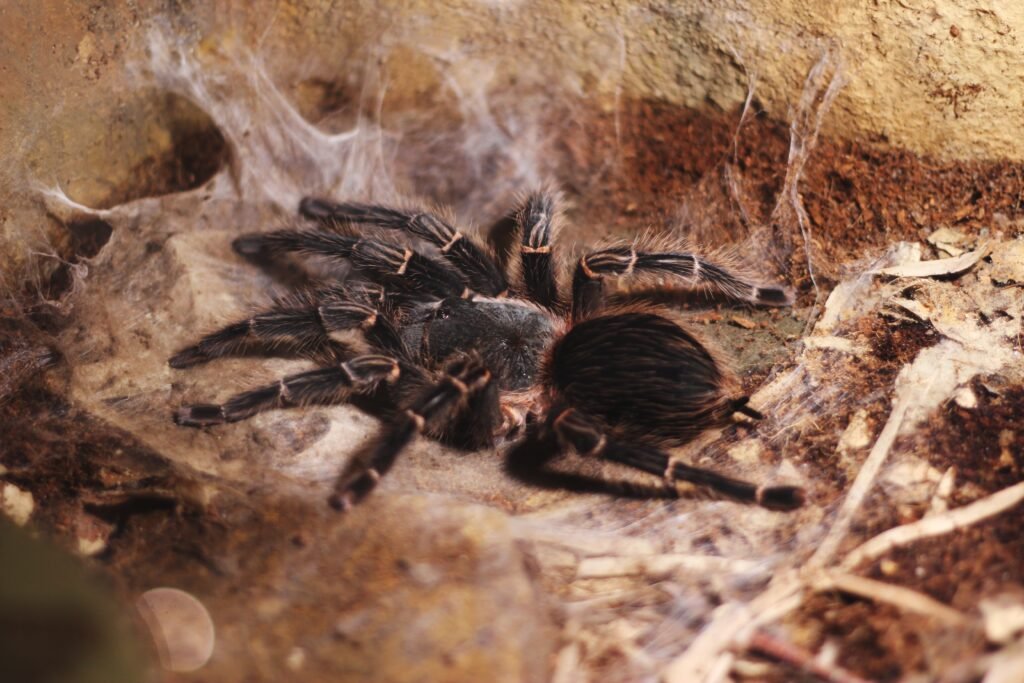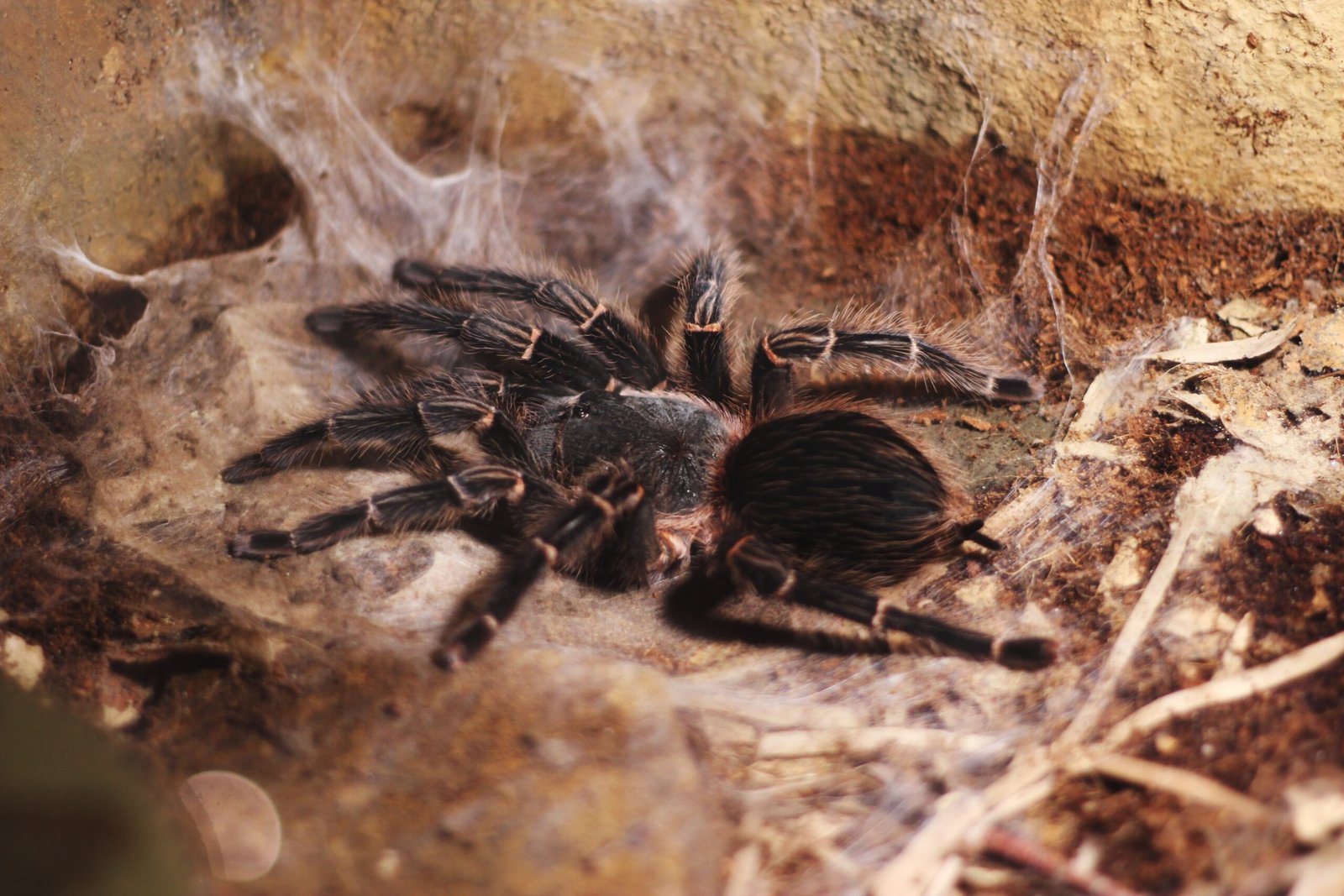Tarantulas, those fascinating creatures known for their intimidating size and mesmerizing beauty. But did you know that not all tarantulas are the same? In fact, tarantulas can be categorized into two groups: Old World and New World species. So, how can you tell them apart? Well, it all comes down to their physical characteristics and geographic distribution. From the unique leg patterns to the distinct venom types, this article will take you on a journey to identify the key differences between Old World and New World tarantulas. So, grab your magnifying glass and get ready to explore the enchanting world of these incredible arachnids.

Physical Characteristics
Body Size
Tarantulas vary in size depending on the species and can range from small, with a leg span of just a few inches, to large, with a leg span of more than ten inches. The body of a tarantula is typically stout, with a rounded abdomen. This thick body allows them to store nutrients and water for times when food may be scarce.
Coloration
One of the most striking features of tarantulas is their coloration. Tarantulas can have a wide range of colors and patterns, including shades of brown, black, and even vibrant blues, greens, and purples. Some species have elaborate patterns or stripes, while others have a more uniform coloration. The coloration of a tarantula can play a role in both camouflage and communication with other tarantulas.
Leg Span
Tarantulas are known for their long, hairy legs, which they use for a variety of purposes such as walking, climbing, and capturing prey. The leg span of a tarantula can vary greatly depending on the species, with some having a leg span of only a few inches, while others can have a leg span of over ten inches. The length of their legs allows tarantulas to move quickly and navigate through their environment with ease.
Hair Density
One unique characteristic of tarantulas is their dense covering of hairs, known as setae, which give them a fuzzy appearance. These hairs serve multiple purposes, including sensing vibrations in the environment, trapping moisture, and deterring predators. The density of hair varies among species, with some tarantulas having a thicker coat of hairs than others. These hairs can range in color from white to brown, providing further variety in the appearance of tarantulas.
Habitat
Geographical Distribution
Tarantulas can be found in various parts of the world, with different species having adapted to different regions and environments. The geographical distribution of tarantulas is vast, including areas such as the Americas, Africa, and Asia. New World tarantulas are primarily found in the Americas, while Old World tarantulas are found in Africa, Asia, and Australia. Each species is adapted to the unique conditions of its respective habitat.
Climate Preferences
Tarantulas have specific preferences when it comes to climate. New World tarantulas, which inhabit the Americas, are generally found in warmer regions with a tropical or subtropical climate. They thrive in environments with high humidity levels and temperatures that range from moderately warm to hot. Old World tarantulas, on the other hand, are adapted to a broader range of climates, as they can be found in both temperate and tropical regions.
Preferred Microhabitats
Within their larger habitats, tarantulas have specific microhabitats they prefer to inhabit. These microhabitats can vary depending on the species and the specific conditions required for survival. Some tarantulas are ground-dwelling and can be found in burrows that they create in soil or under rocks, while others prefer to live in trees or other elevated areas. Tarantulas can also be found in a variety of ecosystems, including rainforests, deserts, and grasslands.
Behavior
Aggressiveness
Tarantulas, despite their intimidating appearance, are generally not aggressive towards humans or other animals unless provoked. Most tarantulas are relatively docile and prefer to avoid confrontation. However, it is important to note that each individual tarantula may have its own unique temperament, and there can be some variation in aggressiveness between species. It is always essential to handle tarantulas with caution and respect their boundaries.
Defensive Tactics
When tarantulas feel threatened, they have various defensive tactics they may employ to protect themselves. One common strategy is to raise the front legs into a defensive posture, displaying their large fangs. Some tarantulas may also release urticating hairs from their abdomen, which can cause irritation and discomfort if they come into contact with the eyes or skin. Additionally, some tarantulas may bite if they perceive a threat, although their venom is typically not harmful to humans.
Web-building Behavior
Web-building behavior varies among tarantula species. While some tarantulas are avid web builders and construct intricate and extensive webs, others may not build webs at all. The purpose of web-building is primarily for capturing prey, as the sticky silk strands of the web ensnare insects and small animals. Tarantulas that do build webs typically position themselves near the entrance and use vibrations in the web to detect the presence of potential prey.
Burrowing Behavior
Many tarantulas are avid burrowers and create intricate underground chambers where they spend a significant portion of their time. These burrows provide shelter from predators and extreme weather conditions and also serve as a safe space for molting. Tarantulas dig their burrows using their powerful pedipalps and jaws, and these burrows can extend deep into the ground. Some species even line their burrows with silk secreted from their spinnerets.
Venom
Toxicity Levels
Tarantulas have venomous fangs that they use to immobilize and subdue their prey. However, the toxicity levels of tarantula venom can vary greatly between species. While some species have venom that is potent enough to incapacitate small animals, including insects and small mammals, most tarantula venom is relatively mild and not harmful to humans. Bites from tarantulas typically result in localized pain and swelling, which generally subside within a few days.
Effects on Prey and Humans
Tarantula venom primarily affects the nervous system of their prey, causing paralysis and eventually leading to death. For humans, tarantula bites are generally not life-threatening and typically result in localized pain, similar to a bee or wasp sting. In rare cases, some individuals may have an allergic reaction to the venom, which can cause more severe symptoms. It is essential to seek medical attention if an allergic reaction occurs or if the symptoms persist or worsen after a bite.

Life Cycle and Reproduction
Mating Behavior
The mating behavior of tarantulas is a fascinating and complex process. Mature males will often wander in search of a receptive female, utilizing pheromones and vibrations to locate potential mates. Once a male has found a female’s burrow, he will perform a courtship display to entice her. If the female is receptive, mating will occur, with the male depositing his sperm onto a specialized web. The female then stores the sperm in her body until she is ready to lay eggs.
Egg-laying
After mating, a female tarantula will typically lay an egg sac containing hundreds of eggs. The female carefully guards and protects the egg sac until the eggs hatch, which can take a few weeks to several months, depending on the species and environmental conditions. During this time, the female will exhibit increased aggression and may become more defensive. Once the eggs hatch, the spiderlings will emerge from the sac and begin their independent lives.
Nurturing Offspring
Tarantulas exhibit limited parental care, with the female providing some level of protection and nutrition for her spiderlings. After the spiderlings emerge from the egg sac, they will often remain close to their mother for a period, moult several times, and gradually disperse to find their own territories. The female may provide some assistance in capturing prey for the spiderlings during this initial stage of their lives, but their care is ultimately minimal compared to other animal species.
Taxonomy and Classification
Family Classification
Tarantulas belong to the family Theraphosidae, which is one of the largest families of spiders. This family includes over 900 recognized species of tarantulas, making it a diverse and fascinating group. Within the family Theraphosidae, tarantulas are further classified into various subfamilies and genera based on morphological and genetic characteristics.
Genus Differentiation
Differentiating between tarantula genera can be a complex task, as it requires a deep understanding of their physical characteristics, including leg structure, palpal bulb, and other anatomical features. Morphological differences, such as variations in body shape, leg size, and coloration, can provide clues for identifying different genera. Additionally, genetic analyses have become increasingly important in distinguishing between closely related species and determining their taxonomic relationships.

Historical Background and Discovery
Exploration of New World Tarantulas
The exploration and study of tarantulas have a rich history dating back centuries. The earliest European accounts of tarantulas can be traced to the explorations of the New World during the Age of Discovery. These accounts often described encounters with large, hairy spiders and gave rise to the name “tarantula,” derived from the Italian town of Taranto, where a similar-looking spider was believed to originate.
Early Taxonomic Confusions
In the early days of tarantula taxonomy, there was confusion and misclassification due to limited knowledge and the sheer diversity of species. Many species were inaccurately labeled as tarantulas, leading to misunderstandings and discrepancies in their classification. It was only with advancements in scientific methodologies and increased understanding of tarantula anatomy that more accurate classifications and species identifications were made.
Feeding Habits
Preferred Prey
Tarantulas are primarily carnivorous and feed on a variety of small animals, including insects, spiders, small amphibians, and even small mammals. The specific prey preferences of tarantulas can vary between species, with some preferring insects and others specializing in larger prey. Many tarantulas are sit-and-wait predators, patiently waiting for prey to come within striking distance before capturing and subduing it with their venomous fangs.
Feeding Frequency
The feeding frequency of tarantulas depends on several factors, including the species, size, and environmental conditions. Tarantulas generally have a slower metabolism compared to other animals, allowing them to survive for extended periods without food. They can go for weeks or even months between meals, especially when resources are scarce or during periods of inactivity. However, when prey is available, tarantulas will consume it opportunistically to ensure they have sufficient energy reserves.
Hunting Techniques
Tarantulas utilize a variety of hunting techniques to capture their prey. Some tarantulas are ambush predators, remaining motionless until prey comes near, then swiftly striking and immobilizing it with their venom. Others may actively pursue their prey, chasing it down and using their speed and agility to overpower it. Tarantulas are well-equipped for hunting, with their exceptional eyesight and sensitive hairs helping them detect and track prey even in low-light conditions.

Conservation Status
Threats to Old World Tarantulas
Tarantulas face various threats to their survival, particularly in regions where human activities impact their natural habitats. Deforestation, habitat destruction, and land conversion for agriculture and urbanization pose significant threats to tarantula populations, especially in areas where they are endemic or have restricted ranges. Illegal collection for the pet trade, pollution, and climate change also contribute to the conservation challenges faced by tarantulas.
Conservation Efforts
Conservation efforts for tarantulas are still in their early stages compared to other more well-known animal groups. However, there is a growing recognition of the need to protect and conserve these fascinating creatures. Efforts are being made to raise awareness about the importance of tarantulas in ecosystems and the need to conserve their habitats. Additionally, captive breeding programs and the establishment of protected areas can help safeguard tarantula populations and ensure their continued survival.
Importance in the Pet Trade
Popular Tarantula Species
Tarantulas have gained popularity as pets due to their unique appearance and low maintenance requirements. Several species are particularly sought after by pet owners, including the Mexican redknee tarantula (Brachypelma smithi), Chilean rose tarantula (Grammostola rosea), and Brazilian black tarantula (Grammostola pulchra). These species are known for their docile nature, making them suitable for beginner tarantula enthusiasts.
Challenges in Keeping as Pets
While tarantulas can make fascinating pets, there are several challenges to consider before bringing one into your home. First and foremost, their venomous bites can cause localized pain and discomfort if mishandled or if an allergic reaction occurs. Additionally, tarantulas require specific care in terms of their enclosure setup, temperature and humidity regulation, and appropriate feeding. It is crucial to research and understand the specific needs of the tarantula species you are considering as a pet to ensure their well-being.

